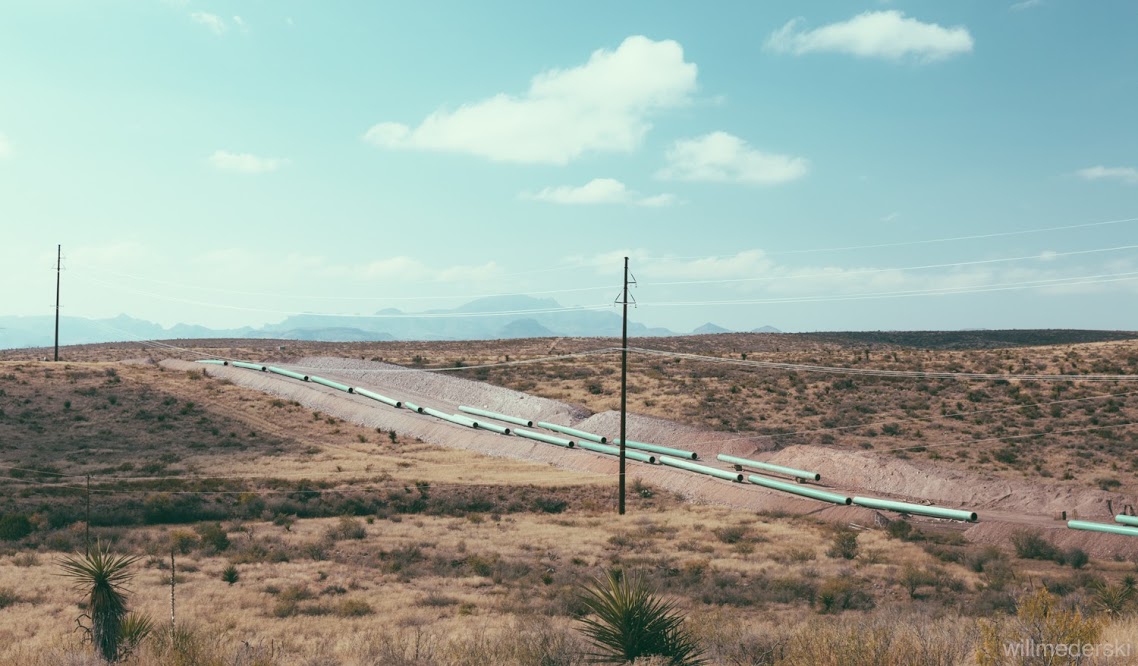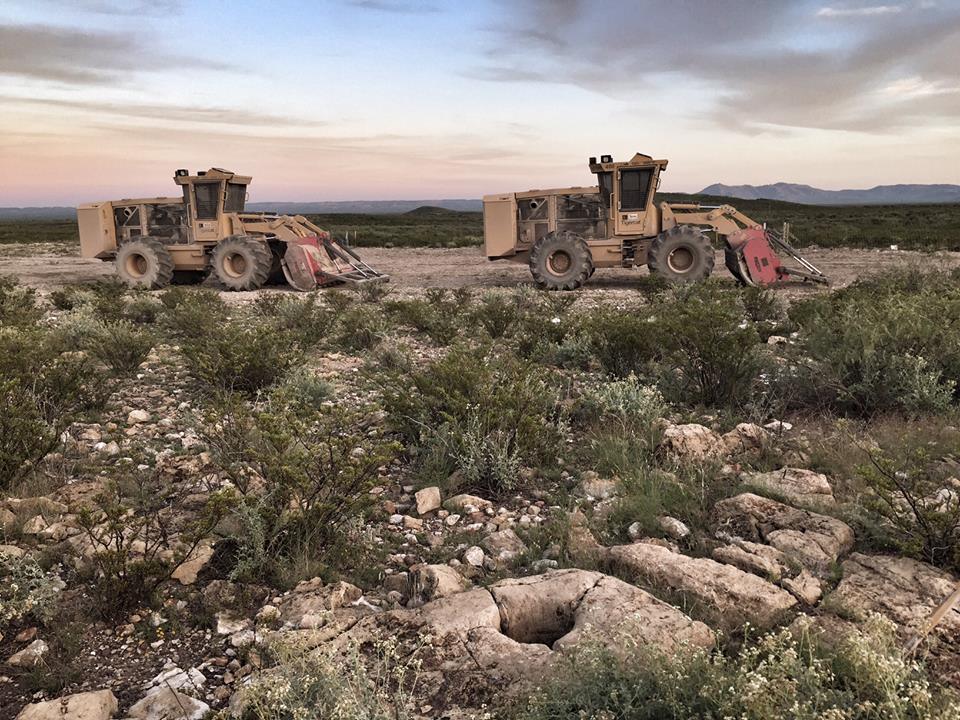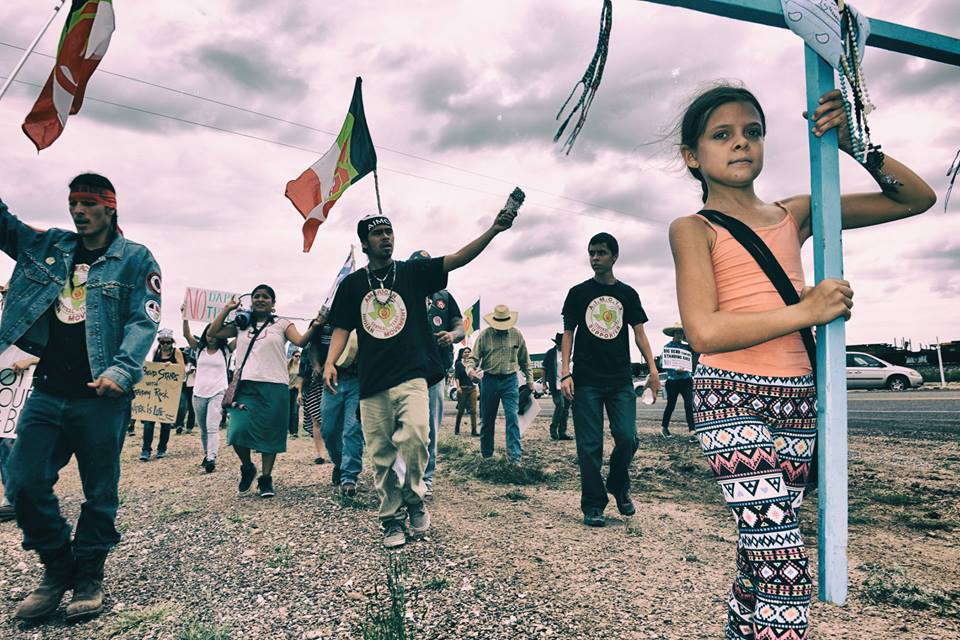Beneath the Chihuahuan Desert of West Texas, a 42-inch diameter pipeline will snake from Northern Pecos County to the U.S.-Mexico boundary near the border town of Presidio, Texas. There, the Trans-Pecos pipeline (TPP) will deliver natural gas derived by hydraulic fracturing (fracking) to Mexico.
The goal, as the consortium building it publicly states, is to “serve Mexico’s energy grid.”
Yet that purpose has environmentalists and a coalition of Texans asking the following: Why was the consortium able to seize ranchlands in its path and avoid a stringent environmental review for a pipeline that critics claim offers more risks than benefits for the Lone Star State?
Mexico has paid for TPP, and the route was approved by the bizarrely named Texas Railroad Commission, which is actually a state oil and gas regulatory agency. ETP Consortium, comprised of Energy Transfer Partners (ETP), Carso Energy, and MasTec, is responsible for constructing the international pipeline.
As part of an agreement with Mexico’s federal electricity commission, the Trans-Pecos pipeline and Energy Transfer Partner’s Comanche Trail pipeline will send a total of 2.5 billion cubic feet of natural gas to Mexico every day.
Full Environmental Review Avoided
Last fall, while all eyes were on the Native American-led protests of the Dakota Access pipeline, opponents of TPP and the Comanche Trail pipelines — a coalition of Texas ranchers, indigenous people, environmentalists, and landowners — were staging a similar battle, one receiving much less attention.
The main group organizing opposition to the pipeline, Big Bend Conservation Alliance, has argued that TPP received lax federal oversight. Through what opponents consider “trickery,” the consortium and the Texas Railroad Commission filed TPP with the U.S. Federal Energy Regulatory Commission (FERC) as an intrastate project, which would end west of the town of Presidio, Texas, less than a mile from the U.S.-Mexico border.
But FERC determined that only a 1,092-foot segment of the pipeline, a link that crosses the international border, was under its jurisdiction and subject to more stringent environmental regulations. Because the rest of the 143-mile-long pipeline was in Texas, FERC considered it an “intrastate” project, and therefore not subject to an environmental impact report.
“It’s trickery, and FERC accepted what TPP and the Railroad Commission told them,” said Luc Novovitch, who was commissioner for Brewster County, Texas, until the end of December.
“I sent letter after letter to FERC, saying ‘look at the whole pipeline,’” Novovitch told DeSmog. “No response. They didn’t care.”
As with the Dakota Access pipeline, the thrust of TPP protests have been over the environmental risks. The pipeline would traverse acres of high desert in the Big Bend area of Texas, which contains some of the last legacy ranchlands in the U.S.
Bulldozers and trenchers have cleared a one-mile wide swath that environmentalists say has disturbed nesting grounds for hundreds of migratory birds and disrupted the flow and function of the Alamito Creek watershed, placing at risk state threatened and endangered populations of the Texas Horned Lizard, Black-Capped Vireo, and Chihuahuan Mud Turtle.
Environmentalists say construction of TPP has already damaged streams, creeks, and seasonal wetlands in its path, and destroyed a 5,000-year-old archeological site.
Credit: Jessica Lutz, Big Bend Conservation Alliance
Few Benefits for Texans in TPP’s Path
TPP opponents also point to the landowners whose property has been taken to make way for the pipeline, which the Texas Railroad Commission has designated as a “common carrier.” The common carrier status assumes a project is in the public interest, and in most of the U.S., a state or municipality must show that any project will benefit all, or at least most, of the citizens impacted by it. And with that designation comes the legal power of eminent domain, the power to seize private land.
The common carrier provision says companies exercising that power must compensate affected landowners, but it doesn’t say how much it has to pay them. The consortium has made landowners sign non-disclosure agreements in each case, but Novovitch said that not every landowner compensated by the consortium benefited equally.
“Some landowners got lawyers for the best deal,” Novovitch said. “Others were caught unaware and couldn’t afford a lawyer and I know they’re struggling.”
The consortium building the Trans-Pecos line has promised $5.9 million in ad valorem tax revenue to the counties it traverses, as well as five “delivery points,” or taps along the route in Texas — three in Presidio County, one in Pecos County, and one in Brewster County. The taps are for, as ETP puts it, “communities to take advantage of economic development opportunities.”
But Novovitch says that in his county, ETP is not being taxed on the equipment or the gas, and that payments on the depreciating pipes and valves will be significantly reduced over time.
“They dangled this carrot of one million dollars a year in tax revenues to residents,” Novovitch said. “But after twenty years, depreciation on that equipment could take tax revenues to zero.”
As for other benefits coming to Brewster County, Novovitch says, there are none. “We haven’t seen any jobs coming to the county,” he told DeSmog.
ETP claimed “public benefit” when filing with FERC, through its promise to provide natural gas to rural communities as part of the project.
A spokesperson for ETP, Vicki Granado, told DeSmog, in an email that the consortium has “provided at our cost five delivery points (taps) along the route in Texas for local communities to take advantage of the economic development opportunities.”
Presidio, Texas, a border town of 4,600, now relies solely on propane. In an email, Brad Newton, Director of the Presidio Municipal Development District, told DeSmog that a gas line to his region, which is one of the poorest in Texas, would be a “game changing event.”
“What is significant is a gas pipeline of any size is being built near enough to Presidio to even get natural gas,” Newton wrote. “ETP said they would build in taps for other regional natural gas providers to be able build new smaller lines to the communities along the route.”
Newton added that a natural gas line into his community would encourage new industry and tourism and would be safer than the transport of propane.
However, as Granado wrote, ETP is not providing a pipeline to any of these communities, but rather a tap that would allow connection to a smaller line. Newton admitted that the city or a commercial franchisee would have to come up with the funds to build that connecting line.
Coyne Gibson, a volunteer at the Big Bend Conservation Alliance, crunched the numbers on the possibility of moving gas from TPP to Presidio, which is more than 12 miles away from the pipeline terminal.
“It will cost $15 [million to] $20 [million], just to get a municipal system up and running. No company has stepped up to act as a commercial franchisee,” Gibson reported to DeSmog.
For the Comanche Trail pipeline, benefits to communities in its path are even harder to find.
The City of San Elizario, Texas, is in the direct path of this natural gas line, but ETP has promised no tax revenue to the city, according to its mayor, Maya Sanchez.
“The easement on the property now owned by the city was negotiated before the donation of land was transferred to our control,” Sanchez told DeSmog via email.
“We too have constituents who don’t have access to natural gas and though ETP mentioned making taps available, the responsibility to provide this infrastructure rests solely on the city or a third party vendor. And being a relatively new city, incorporated in 2013, our entire operating budget is less than $1 million.”
Deck Stacked Against Pipeline Opponents
A coalition of Texas ranchers, indigenous people, environmentalists, and landowners have rallied to protest construction of the Trans-Pecos pipeline. Credit: Jessica Lutz, Big Bend Conservation Alliance
Pipeline opponents admit their battle is steep, and that their protests have not significantly slowed construction.
There is a legal battle playing out, however. On January 3, the Big Bend Conservation Alliance filed suit against FERC in the U.S. Court of Appeals. The group wants a review of the process FERC used to approve TPP construction and the operation of the Presidio Border Crossing Project.
Considering the first oral argument won’t be heard until March at the earliest, the legal battle is unlikely to prevent completion of the pipeline.
But, given the many more border-crossing pipelines on the drawing board, Gibson, who has also worked in petrochemical engineering for more than a decade, said it’s the long game that matters.
“We wish to establish precedent that any follow-on pipeline project, or related infrastructure, will not be as simple as TPP, and that the state, federal, and constitutional violations exploited in this project will not be available avenues to those who may attempt to follow,” he told DeSmog.
Main image: Sections of the Trans-Pecos pipeline await assembly. Credit: Will Mederski
Subscribe to our newsletter
Stay up to date with DeSmog news and alerts








